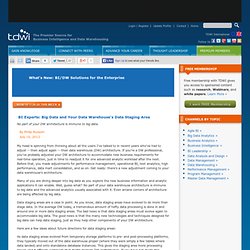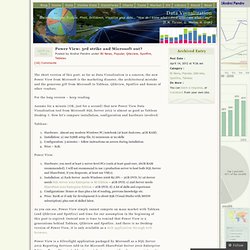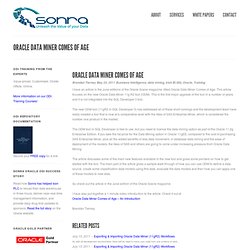

Data analysis. Business Intelligence. Big Data and Your Data Warehouse's Data Staging Area. BI Experts: Big Data and Your Data Warehouse's Data Staging Area No part of your DW architecture is immune to big data.

By Philip RussomJuly 10, 2012 My head is spinning from thinking about all the users I've talked to in recent years who've had to adjust -- then adjust again -- their data warehouse (DW) architecture. If you're a DW professional, you've probably adjusted your DW architecture to accommodate new business requirements for real-time operation, just in time to readjust it for one advanced analytic workload after the next.
Before that, you made adjustments for performance management, operational BI, text analytics, high performance, data mart consolidation, and so on. Many of you are diving deeper into big data as you explore the new business information and analytic applications it can enable. Data staging areas are a case in point. Here are a few ideas about future directions for data staging areas: Pentaho. BIRT Home. Power View: 3rd strike and Microsoft out? « Data Visualization. April 14, 2012 The short version of this post: as far as Data Visualization is a concern, the new Power View from Microsoft is the marketing disaster, the architectural mistake and the generous gift from Microsoft to Tableau, Qlikview, Spotfire and dozens of other vendors.

For the long version – keep reading. Assume for a minute (OK, just for a second) that new Power View Data Visualization tool from Microsoft SQL Server 2012 is almost as good as Tableau Desktop 7. Now let’s compare installation, configuration and hardware involved: Tableau: Hardware: almost any modern Windows PC/notebook (at least dual-core, 4GB RAM).Installation: a) one 65MB setup file, b) minimum or no skillsConfiguration: 5 minutes – follow instructions on screen during installation.Price – $2K.
Power View: Hardware: you need at least 2 server-level PCs (each at least quad-core, 16GB RAM recommended). Donald(dot)Farmer.
Business Intelligence Guidance, Thought Leadership, and Experience. Oracle Business Intelligence Blog. BPEL. OBIEE by Shiva Molabanti. BI-Quotient » Blog Archive » Oracle Data Miner Comes of Age. I have an article in the June editions of the Oracle Scene magazine, titled Oracle Data Miner Comes of Age.

This article focuses on the new Oracle Data Miner 11g R2 tool (ODM). This is the first major upgrade of the tool in a number of years and it is not integrated into the SQL Developer 3 tool. The new ODM tool (11gR2 in SQL Developer 3) has addressed all of these short comings and the development team have really created a tool that is now at a comparative level with the likes of SAS Enterprise Miner, which is considered the number one product in the market. The ODM tool in SQL Developer is free to use, but you need to licence the data mining option as part of the Oracle 11.2g Enterprise Edition. The article discusses some of the main new features available in the new tool and gives some pointers on how to get started with the tool.
So check out the article in the June edition of the Oracle Scene magazine. I have also put together a 1 minute video introduction to the article. OBIEE 11g Security Week : Row-Level Security. So we’ll start this week’s focus on OBIEE 11g security with the topic that most people associate with “security” around reports – row-level security.

Row-level security is where groups of users have access to a set of reports, but they all see different sets of data within the reports due to filters being applied silently in the background. As a report author you can of course apply filters to an analysis, but in this case I think what people generally associate row-level security with is filters that are applied automatically, according to a set of rules, without the user being aware of it or even filters being visible when you add a filter view to the analysis’ compound layout. So where can you set up row-level security in OBIEE, so that this background row-level filtering takes place? In general, you would set up row-level filtering like this using two repository features, together: The steps to set up security to restrict users to a single region’s worth of data would look like this:
SpagoBI - Home. BPM. ELT-Other.